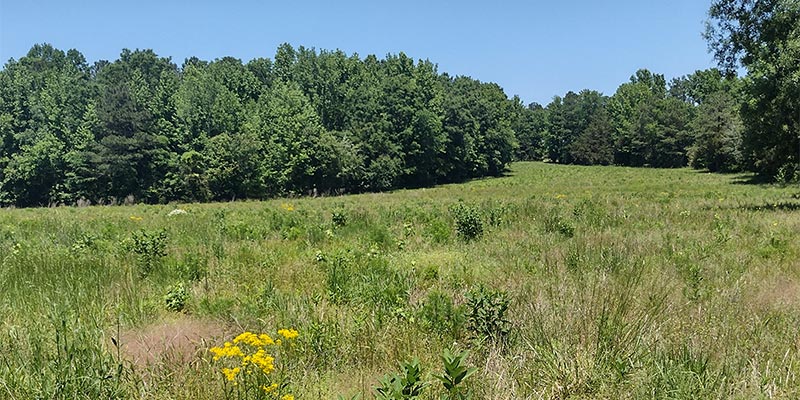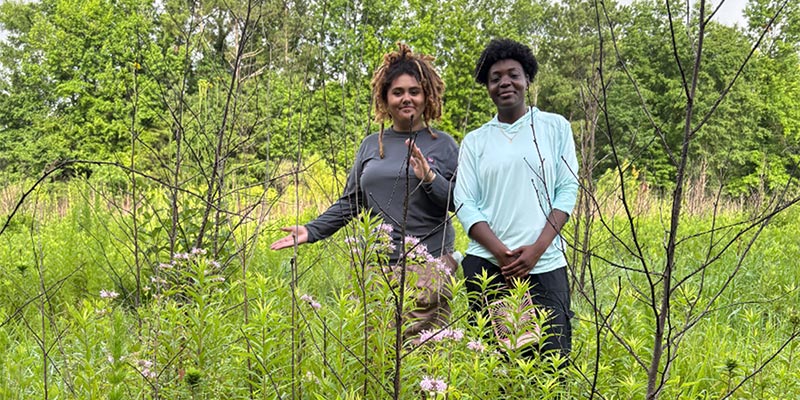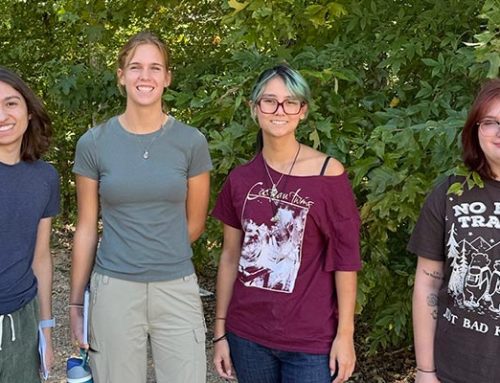Summer Interns – Making a Difference for the Prairies

This summer Carolina Wildlands hosted two interns, Lucinda Duah and Madisyn Nooks, who are completing their undergraduate degrees in Botany and Environmental Science, respectively. Their mission? Develop a strategy to deal with one of the biggest challenges we face in managing diverse native prairies – pioneer tree species.
Two main pioneer species are doing what they are evolved to do: transitioning the 15-acre Fireworks Prairies at Southern 8ths back into forest – Sweetgum (Liquidambar styracifolia) and Loblolly Pine (Pinus taeda). These native trees are very effective at setting up thickets within a few years, and a young forest a few years later, complete with a canopy of shade to encourage other tree species and discourage native grasses and wildflowers. That’s a good thing – unless you’re managing an area as a Southeastern grassland.
Over eight short weeks between mid-June and mid-August, Lucinda and Madisyn learned as much as they could about these trees – through field observations and online research. They progressed from cutting back hundreds of Sweetgum and Loblolly Pine seedlings and saplings, to participating in a controlled burn, to developing test plots to understand how these species respond to various disturbance.
The interns confirmed our understanding that grasslands and savannas were historically part of the landscape in the Southeast, managed on a large scale by indigenous cultures with extensive burning and grazing by large herbivores such as Bison. So how do we translate and adapt this Traditional Ecological Knowledge to the realities of a much smaller nature preserve in 21st century South Carolina? What’s their recommendation?
- Pioneer species (especially Sweetgum) respond to disturbance by developing larger root systems with large starch reserves that generate multiple new sprouts each year
- For this reason, it is important to use a combination of both cutting and prescribed burning timed to impact the trees when they are at their most vulnerable – at the beginning of the growing season in late winter, and at the end of the growing season in fall
- Being consistent with this schedule over a period of years is essential
So…now we have a plan. Mission accomplished Lucinda and Madisyn!!

Madisyn Nooks and Lucinda Duah







